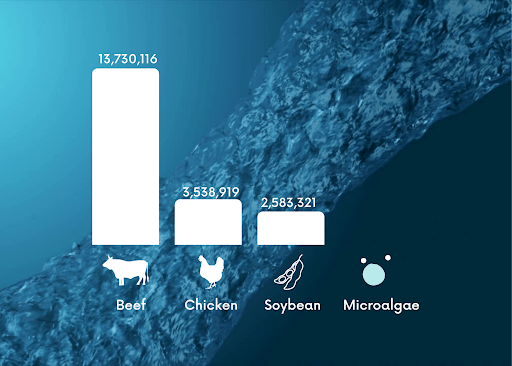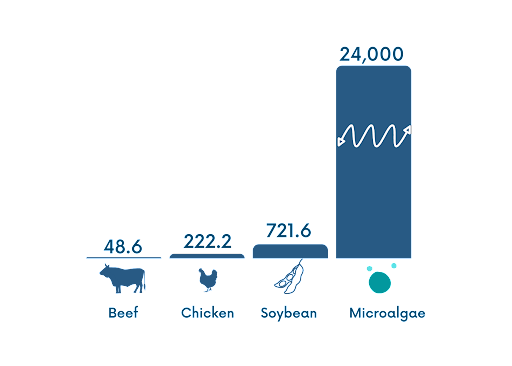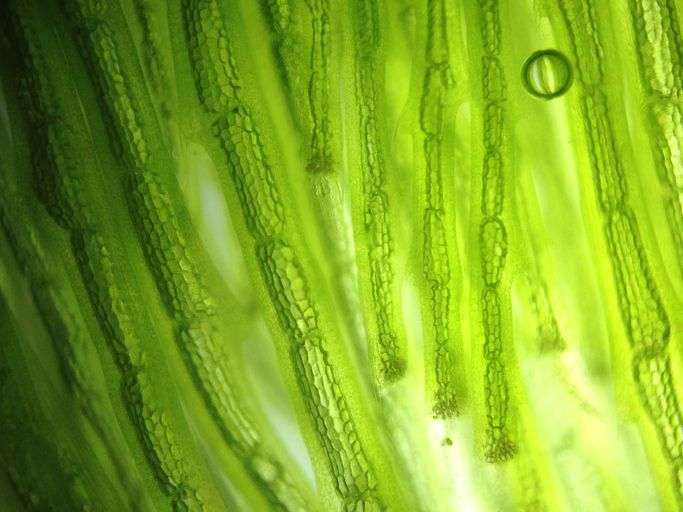Tamar Zur is founder of Eco-Fly Ventures, an agtech consultancy based in Sydney, Australia. The views expressed in this guest article are the author’s own and do not necessarily represent those of AFN.
The global food production system faces a triple challenge:
- The population is growing, which means we must increase productivity to meet demand.
- Climate change is impacting the productivity of our traditional agricultural practices, so we must develop and adopt new, sustainable methods and technologies.
- Natural resources such as land, water, and fish stocks are in decline or have been overused – so we need to find alternatives.
The world population is on track to reach 9.8 billion by 2050. Livestock, conventional crops, and oceanic fisheries will fail to meet the demand for protein. The facts are now clear. The sixth assessment report from the Intergovernmental Panel on Climate Change released last month shocked the world with data-supported predictions of continued global warming and aridification of vital food growing regions of the world, including Australia. The UN Food and Agriculture Organization reports that the world has insufficient grazing and arable land to feed its population by 2050. An uncontrollable global protein deficit may be inevitable without transformative changes in agriculture to increase protein productivity by 50% by 2050.
Beyond reduce, reuse, and recycle – what can we do to tackle the triple challenge?
Australia is investing in R&D to support its emerging marine bioproducts industry to address this triple challenge.
One such initiative is the Marine Bioproducts Cooperative Research Centre (MB-CRC), a collaboration of 11 research partners, three state governments, five third-party participants, and 49 industry partners — including, among others, algae farming startups such as Qponics, Sea Forest, and Venus Shell Systems — which are tasked with turbocharging the industry. This ten-year, A$270 million ($202 million) enterprise, announced by the Australian government in June 2021, will generate valuable and sustainably produced marine-sourced bioproducts.
“Many resource economists around the world are now predicting that the rapid transition of aquaculture, the second-generation marine bioindustry, into its third high-value marine bioproducts generation will create a further trebling of the value of marine bioindustries to $712 billion per annum by 2035,” said John Gunn, chair of the MB-CRC and chair of Australia’s Integrated Marine Observing System (IMOS).
“Our projections show that by 2035 MB-CRC industry partners will be contributing $3 billion in export revenue to the Australian economy through expansion of all elements of the marine bioproducts supply chain with certification of clean green credentials protected by virtue of the blockchain process.”
CSIRO, Woolworths unveil FutureFeed, a seaweed supplement that cuts cow methane by 80% – read more here
The MB-CRC is mandated to rapidly expand Australia’s emerging marine bioproducts industry through sustainable exploitation of the nation’s vast coastal oceanic and salty tidal river resources. Leveraging these, it will create high-value products and food protein.
Algae will be a major focus, and will offer an additional benefit in the form of sequestered carbon. Globally, microalgae and macroalgae produce about 50% of atmospheric oxygen, and about 2 kilograms of carbon dioxide is sequestered into their cells to produce 1 kilogram of biomass. Carbon-negative algae farms around Australia’s shoreline can become a source of income-generating carbon credits.
Australia’s marine bioresources are unique
The land down under has the world’s third-largest marine environment, with pristine tidal rivers and plentiful sunshine – and up to 95% of its marine bioresources are unique to the country.
These extensive natural resources provide the potential for Australia to become a global hub for algae cultivation, producing a wide range of high-value products such as omega-3 fatty acids to ensure farm viability. Importantly, the byproduct of extracting high-value products from algae is often protein-rich biomass with the full complement of essential amino acids.
Australia’s unique bioresources can be utilized for plant-based proteins, nutraceuticals, pharmaceuticals, high-value oils, bioplastics, and more. Moreover, algae farms can offer sustainable environmental and economic benefits while also creating carbon credits and permanent non-seasonal jobs in coastal regions of Australia.
Algae farms – a drought-proof food production system
Algae farms address multiple global environmental challenges. Through the cultivation of macroalgae (seaweeds and kelps) and microalgae (single-celled photosynthetic organisms) in salty water, the marine bioproducts industry is resistant to the worst effects of global warming.
Macroalgae may be farmed offshore and on land in ponds, whereas microalgae are usually farmed on land with outdoor ponds offering the most cost-effective cultivation. And as algae farming is not dependent on freshwater, it is resistant to increasingly severe and frequent drought across Australia.

Source: FG Acién Fernández, JM Fernández Sevilla, and E Molina Grima, ‘Costs analysis of microalgae production,’ Biofuels from Algae, Elsevier, 2019.
Image credit: Eco-Fly Ventures
As an illustration, producing 1 ton of Australia’s current favored protein — beef — requires more than 13 million liters of freshwater, whereas producing 1 ton of marine microalgae requires none.
Algae is a primary producer in the oceanic food chain
Give me a fish, and I eat for a day; teach me how to cultivate what the fish eats, and I will eat for a lifetime.
Every creature in the oceanic food chain needs organic carbon to survive, and macroalgae and microalgae play an important role as autotrophs – that is, by utilizing energy from the sun through photosynthesis, and then serving as a food source for other organisms.
Declining stocks of deep-sea fish threaten global supplies of eicosapentaenoic and docosahexaenoic omega-3 acids, as they are presently the major source of these essential fatty acids. Omega-3 acids and palmitoleic omega-7 acids have positive health benefits as they are powerful natural anti-inflammatory agents. Marine animals acquire these from consuming algae and accumulate them in their fats.
Similarly, humans can source them from fish or algal-based oils. Algal oil is vegetarian and free of heavy metals and dioxins that accumulate in fish, which must be removed from their oils during processing. Production of omega-3-rich algal oil on algae farms will reduce the demand for fish oil as ocean warming and overfishing threaten their supply.
Algae-based protein productivity significantly exceeds livestock and conventional crops
Marine macroalgae- and microalgae-based agriculture is a promising new way to sustainably produce plant-based ‘meat’ and healthy ‘superfoods’ for the future.

Source: M de Vries, M, CE van Middelaar, and IJM de Boer, ‘Comparing environmental impacts of beef production systems: A review of life cycle assessments’, Livestock Science, vol. 178, no. 1–3., 2015.
Image credit: Eco-Fly Ventures
The average protein production of microalgae farming is 24 tons a year, compared to 720 kilograms for soybeans. The global shortfall in protein production cannot be addressed by increasing crop yields and volumes, due to insufficient land and the increasing incidence of drought. Farming of microalgae offers an efficient method of producing an alternative protein powder with high yields of 70% complete protein, suitable for use as a food ingredient.
Australia’s response to the growing push for carbon-neutral proteins recognises that the oceans can provide a solution in continents that are predicted to become hotter and drier in coming decades.





